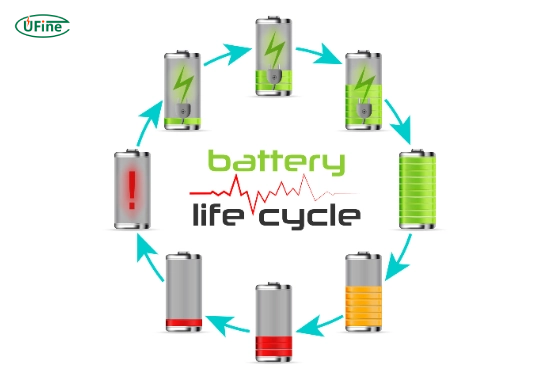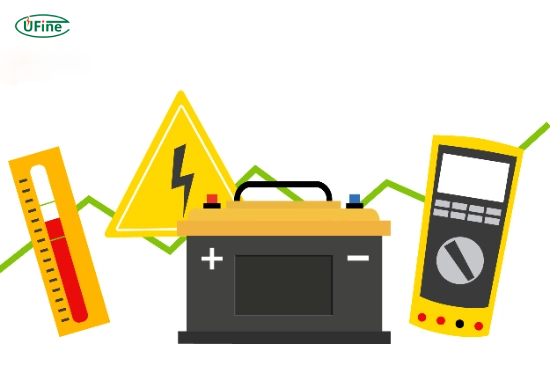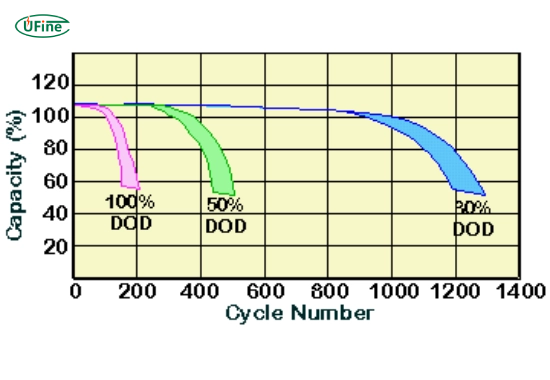How do I prevent battery cycles? This question is crucial for anyone who relies on rechargeable batteries in their devices. Batteries are essential for powering smartphones, laptops, tablets, and electric vehicles. However, we contribute to its cycle count every time we charge and discharge a battery. Understanding how to minimize these cycles can significantly extend the life of your battery. This article will explore practical strategies to prevent battery cycles and ensure your devices remain powered for as long as possible.
Part 1. What are battery cycles?
Battery cycles refer to the complete process of charging and discharging a battery. Each time you use your device and charge it back up, you contribute to its cycle count. For example, using 50% of your battery’s capacity and then wholly recharging it counts as half a cycle. Understanding this concept is crucial because most batteries have limited cycles before their capacity diminishes significantly.
Key Points About Battery Cycles
- Cycle Count: The total number of complete charge-discharge cycles a battery can undergo before its capacity drops to around 80% of its original state.
- Impact on Lifespan: The more cycles a battery goes through, the shorter its lifespan. Manufacturers design most lithium-ion batteries for approximately 300 to 500 cycles.
- Partial Discharges: Using only part of your battery’s capacity before recharging can help extend its lifespan.
Part 2. Why is it important to prevent battery cycles?
Preventing unnecessary battery cycles is vital for several reasons:
- Cost Efficiency: Replacing batteries can be expensive. By extending the life of your current battery, you save money.
- Environmental Impact: Fewer batteries mean less electronic waste, contributing to ecological sustainability.
- Device Performance: A well-maintained battery ensures your device runs efficiently without unexpected shutdowns or performance issues.
Part 3. Best practices for minimizing battery cycles
To effectively reduce the number of charge cycles your battery undergoes, consider implementing the following practices:
1. Maintain Optimal Charge Levels
Keeping your battery within an optimal charge range is one of the best ways to extend its life. Aim to keep your device charged between 20% and 80% rather than allowing it to drop to 0% or charging it to 100%. This practice helps reduce stress on the battery and can lead to fewer cycles over time.
2. Use Smart Charging Techniques
Utilize smart charging methods that limit the maximum charge level. For instance, some devices allow you to set a maximum charge limit (e.g., 80%). This prevents the battery from reaching total capacity, which can stress the cells. By avoiding total charges, you can enhance the longevity of your battery.
3. Avoid Extreme Temperatures
Batteries are sensitive to temperature fluctuations. Keeping devices in extremely hot or cold environments can accelerate degradation. Ideally, store and use devices at room temperature (around 20°C or 68°F). High temperatures can cause batteries to swell and lose capacity faster, while low temperatures can reduce their effectiveness.
4. Regularly Update Software
Keeping your device’s software up-to-date ensures it operates efficiently and optimizes energy. Manufacturers often release updates that include power management improvements, which can help optimize how your device uses power and manages charging cycles.
5. Limit Resource-Intensive Applications
Applications that consume high amounts of power can lead to faster battery depletion and more frequent charging cycles. Monitor which apps drain your battery the most and limit their use when possible. Consider closing apps that you are not actively using running in the background.
Part 4. How does charging to 80% instead of 100% affect battery lifespan?
Charging your device to 80% instead of 100% can significantly impact its lifespan. Charging batteries to total capacity puts more stress on them due to higher voltage levels. This stress can lead to faster chemical reactions inside the battery, ultimately reducing its lifespan.
Benefits of Charging to 80%
- Reduced Stress: Lowering the charge level reduces stress on the battery’s internal components.
- Fewer Cycles: By avoiding total charges, you decrease the number of complete charge cycles over time.
- Longer Lifespan: Many studies suggest that consistently charging to around 80% can double or even triple the lifespan of lithium-ion batteries compared to those charged fully every time.
Part 5. Understanding depth of discharge (DoD)
The term Depth of Discharge (DoD) refers to how much energy a battery uses before it is recharged again. A lower DoD means fewer cycles and a longer lifespan for the battery.
Key Insights on DoD
- Shallow Discharges: Performing shallow discharges (e.g., using only 20-30% of the total capacity) can significantly increase cycle life.
- Cycle Life vs. Usable Capacity: While shallow discharges extend cycle life, they may not utilize the battery’s full capacity in terms of energy output.
Part 6. The role of battery management systems (BMS)
A Battery Management System (BMS) plays a crucial role in monitoring and managing battery performance:
- Charge Control: BMS regulates the charging process to prevent overcharging or excessive discharging of batteries.
- Temperature Management: It helps maintain optimal operating temperatures, protecting against overheating.
- State Monitoring: BMS tracks batteries’ health and performance metrics, providing valuable data for maintenance decisions.
Part 7. Charging habits that help extend battery life
Adopting better charging habits can also help minimize cycles:
1. Avoid Overnight Charging
While many people charge their devices overnight, this practice can lead to overcharging unless appropriately managed. Instead, try charging when you can monitor it closely or use timers.
2. Use Quality Chargers
Using original or high-quality chargers ensures your device receives stable power without fluctuations that could harm the battery. Cheap chargers may not provide consistent voltage levels and could damage your battery over time.
3. Turn Off While Charging
Turn off your device while charging it; this reduces power consumption and heat generation during the charging process. Turning off unnecessary features like Bluetooth or Wi-Fi can also help conserve energy.
Part 8. Storing batteries properly
If you need to store devices for an extended period:
- Charge Level: Store batteries at around 40-50% charge.
- Environment: Keep them in a cool, dry place away from direct sunlight or heat sources.
Proper storage helps maintain battery health over long periods without use.
Part 9. FAQs
-
What is a battery cycle?
A battery cycle refers to discharging and recharging a battery from 0% to 100%. Each cycle contributes to the battery’s overall wear. -
How many cycles does a lithium-ion battery last?
Most lithium-ion batteries are designed for approximately 300 to 500 complete charge cycles, after which their capacity significantly diminishes. -
Can I prevent my laptop’s battery from degrading?
Yes! You can prolong its lifespan by keeping it charged between 20% and 80%, avoiding extreme temperatures, and using smart charging techniques. -
Is it wrong to leave my phone plugged in overnight?
If left plugged in overnight, your phone can overcharge if not managed correctly; it’s best to avoid this habit if possible. -
How does temperature affect my device’s battery?
Extreme temperatures can accelerate degradation; keeping devices at room temperature helps maintain optimal performance and longevity.
Related Tags:
More Articles

How to Choose the Best Floor Scrubber Battery for Commercial Cleaning?
Selecting the ideal floor scrubber battery ensures a long runtime, rapid charging, and minimal maintenance for efficient commercial cleaning operations.
Battery for Blower vs Battery for Leaf Vacuum: Which One Should You Choose?
Battery for blower vs leaf vacuum—learn the key differences in power, fit, and runtime to choose the right battery for your outdoor tool needs.
How to Choose the Right Battery for Blower?
Choosing the right blower battery? Consider voltage, capacity, chemistry & usage. This guide helps match the best battery for peak performance.
How to Choose the Best Insulated Battery Box for Lithium Batteries?
Choosing the Best Insulated Battery Box for Lithium Batteries? Discover key factors such as size, material, and safety for optimal protection and performance.
7 Critical Elements on a Lithium Battery Shipping Label
What must be on a lithium battery shipping label? Learn 7 key elements to ensure safety, legal compliance, and correct handling across all transport modes.






